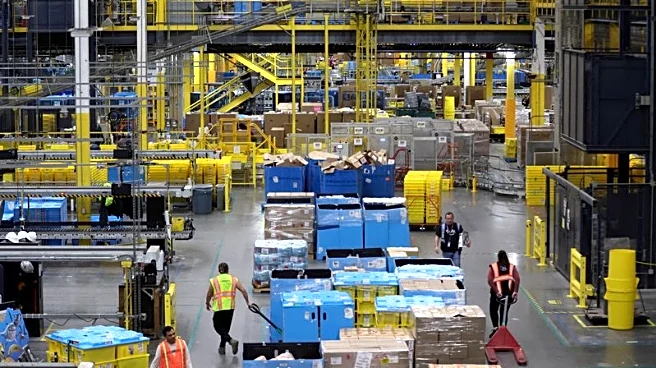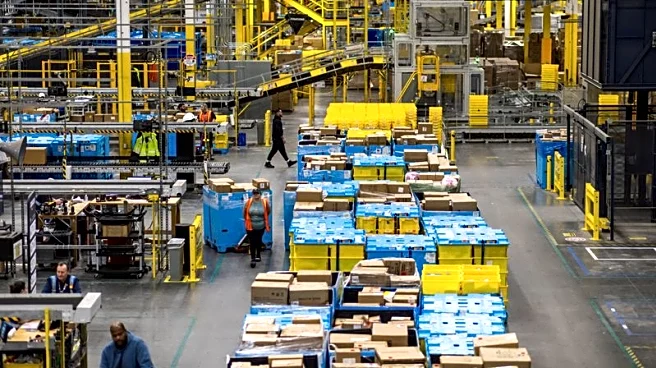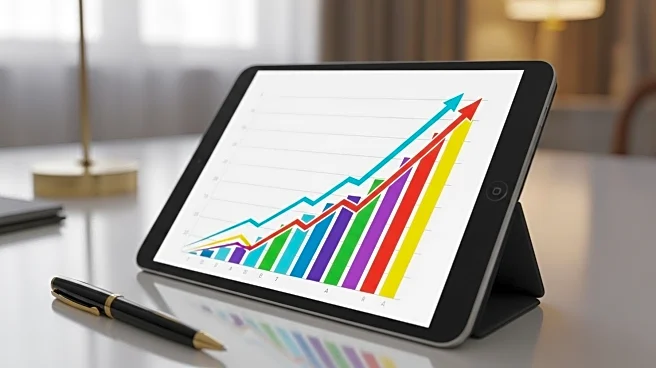What's Happening?
Adobe Analytics has projected a 5.3% year-over-year increase in U.S. online sales during the holiday season, from November 1 to December 31, 2025. This growth is expected despite holiday discounts remaining flat compared to the previous year, with discounts reaching up to 28% off listed prices. Electronics, apparel, and furniture are anticipated to drive the majority of online spending. Cyber Monday is predicted to remain the most significant online shopping day, although Black Friday is expected to see higher growth at 8.3%. The forecast also highlights a 52% increase in the share of units sold for high-priced electronics, 39% for appliances, and 32% for personal care items. Meanwhile, grocery and furniture categories may experience declines as consumers seek lower-priced options.
Why It's Important?
The projected growth in online sales reflects a shift in consumer behavior towards digital shopping, influenced by price sensitivity and economic concerns. The flat discount rates suggest that retailers may not be able to offer deeper price cuts, potentially affecting consumer spending patterns. The increase in high-priced product sales indicates a demand for premium items, which could benefit manufacturers and retailers in these sectors. However, the anticipated decline in grocery and furniture sales highlights a potential challenge for these industries. The growth in 'buy now, pay later' services, expected to drive $20.2 billion in online spending, underscores the financial pressures consumers face, as they seek flexible payment options.
What's Next?
Retailers are likely to continue competing aggressively with early holiday deals, as seen with Walmart, Target, and Amazon's October sales events. The introduction of new shopping features, such as OpenAI's checkout feature for ChatGPT users, could further influence consumer behavior and drive traffic to online platforms. As consumer sentiment remains mixed, with only 41% optimistic about the economy, retailers may need to adapt their strategies to address price sensitivity and economic anxiety. The anticipated growth in AI-driven shopping queries suggests a potential shift towards more personalized and efficient online shopping experiences.
Beyond the Headlines
The flat discount trend and increased reliance on 'buy now, pay later' services may have long-term implications for consumer debt levels and financial health. Retailers might need to balance offering competitive prices with maintaining profitability. The rise in AI-driven shopping could lead to more sophisticated consumer data analytics, enabling retailers to tailor their offerings more precisely. However, this also raises concerns about data privacy and the ethical use of consumer information.











